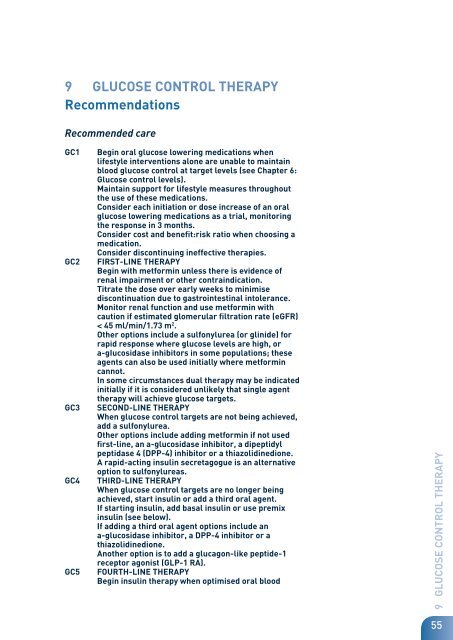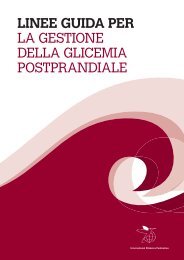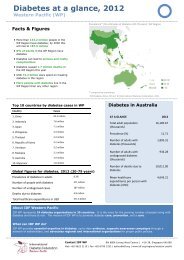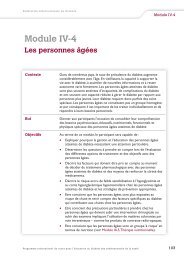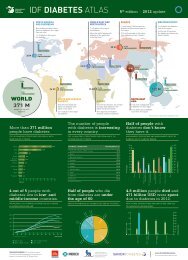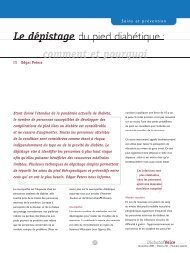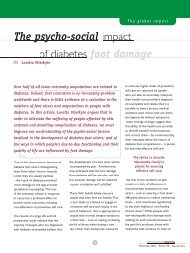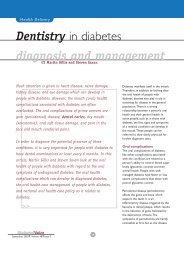Evidence-base - International Diabetes Federation
Evidence-base - International Diabetes Federation
Evidence-base - International Diabetes Federation
You also want an ePaper? Increase the reach of your titles
YUMPU automatically turns print PDFs into web optimized ePapers that Google loves.
9 GLUCOSE CONTROL THERAPY<br />
Recommendations<br />
Recommended care<br />
GC1 Begin oral glucose lowering medications when<br />
lifestyle interventions alone are unable to maintain<br />
blood glucose control at target levels (see Chapter 6:<br />
Glucose control levels).<br />
Maintain support for lifestyle measures throughout<br />
the use of these medications.<br />
Consider each initiation or dose increase of an oral<br />
glucose lowering medications as a trial, monitoring<br />
the response in 3 months.<br />
Consider cost and benefit:risk ratio when choosing a<br />
medication.<br />
Consider discontinuing ineffective therapies.<br />
GC2 FIRST-LINE THERAPY<br />
Begin with metformin unless there is evidence of<br />
renal impairment or other contraindication.<br />
Titrate the dose over early weeks to minimise<br />
discontinuation due to gastrointestinal intolerance.<br />
Monitor renal function and use metformin with<br />
caution if estimated glomerular filtration rate (eGFR)<br />
< 45 ml/min/1.73 m 2 .<br />
Other options include a sulfonylurea (or glinide) for<br />
rapid response where glucose levels are high, or<br />
a-gIucosidase inhibitors in some populations; these<br />
agents can also be used initially where metformin<br />
cannot.<br />
In some circumstances dual therapy may be indicated<br />
initially if it is considered unlikely that single agent<br />
therapy will achieve glucose targets.<br />
GC3 SECOND-LINE THERAPY<br />
When glucose control targets are not being achieved,<br />
add a sulfonylurea.<br />
Other options include adding metformin if not used<br />
first-line, an a-glucosidase inhibitor, a dipeptidyl<br />
peptidase 4 (DPP-4) inhibitor or a thiazolidinedione.<br />
A rapid-acting insulin secretagogue is an alternative<br />
option to sulfonylureas.<br />
GC4 THIRD-LINE THERAPY<br />
When glucose control targets are no longer being<br />
achieved, start insulin or add a third oral agent.<br />
If starting insulin, add basal insulin or use premix<br />
insulin (see below).<br />
If adding a third oral agent options include an<br />
a-glucosidase inhibitor, a DPP-4 inhibitor or a<br />
thiazolidinedione.<br />
Another option is to add a glucagon-like peptide-1<br />
receptor agonist (GLP-1 RA).<br />
GC5 FOURTH-LINE THERAPY<br />
Begin insulin therapy when optimised oral blood<br />
9 GLUCOSE CONTROL THERAPY<br />
55


